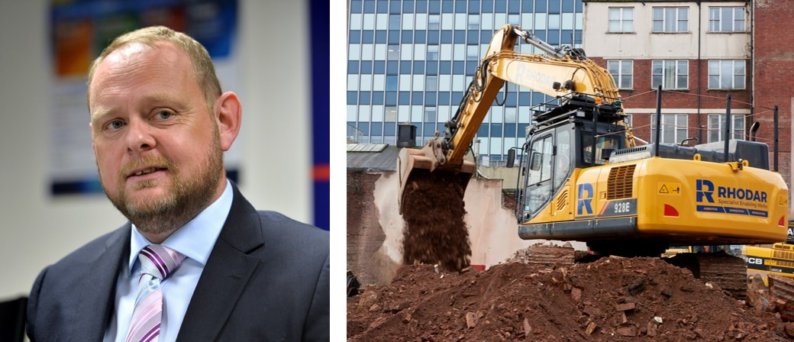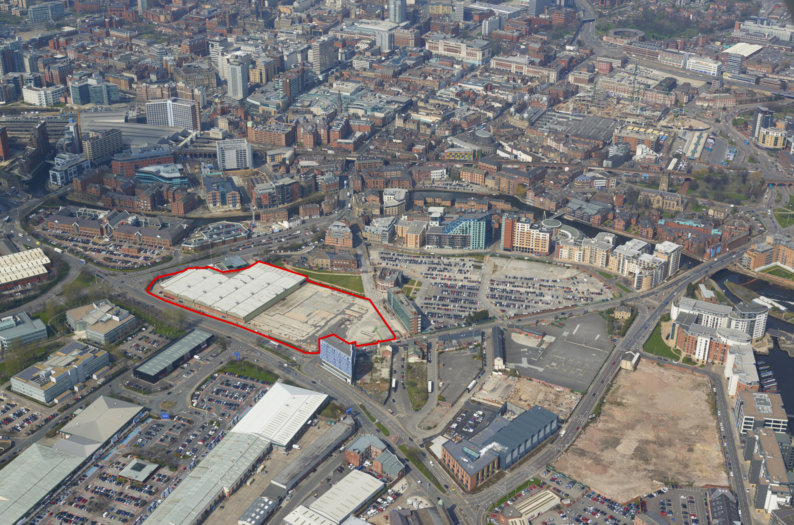Why unlocking brownfield sites for regeneration is vital for cities to keep up with a developing world
Posted on in Company News

John Davies, Remediation Director at Rhodar, discusses the importance of making use of previously developed land when planning urban futures.
Regeneration projects are the lifeblood of our thriving metropolitan economies, continually reinvigorating cities with new office spaces, retail areas, tourist draws and other vibrant indicators of a dynamic high street and commercial base.
It is vital that cities make full use of available brownfield sites in the continuing procession of reinvention – introducing exciting, leading edge newbuilds that boost their credentials as outward looking, international destinations that attract investment.
Brownfield sites tend to be more central than greenfield spaces, placing fresh developments firmly at a city’s heart. The positioning makes it more convenient for commuters, shoppers, tourists, potential residents and out-of-town business visitors, breathing new life into the heart of the city’s economy, rather than off-the-beaten-track locations on the periphery of things, away from transport routes and hubs.
Local government bodies increasingly favour brownfield development over greenfield. Indeed, many are prioritising these schemes by actively trying to prevent the destruction of valuable open spaces in areas close to brownfield sites that have planning permission, but where building work has not started.
In my position at Rhodar, one of the UK’s leading remediation, asbestos removal and demolition companies, I have seen how regeneration of brownfield sites can be used to build innovative architecture in prime locations where a bold change of use is desired.
If we take the city region of Leeds as an example, it is a pioneer of this process, having virtually reinvented itself over the last 20 or 30 years, working out in all directions from its once tired and unattractive waterfront. Here, derelict warehouses and run-down factories were transformed into a thriving, attractive commercial, leisure and residential centre – creating thousands of jobs and a modern urban environment in the process.
The Wellington Street and Whitehall Road area of the city has been totally transformed in recent years. For decades it was in gradual decline but is now unrecognisable, regenerated and reinvented with sleek new office blocks housing many big name businesses.
The latest example is the £350m South Bank project, which has been hailed as the biggest change to Leeds in 100 years and will create a new city park, employment space and homes. Rhodar contributed to the first phase of regeneration at the site by demolishing and clearing the large steel portal frame superstructure which covered approximately 100,000 square feet of the old ASDA Merchandising Centre of Excellence, which sits on the iconic Tetley Brewery site.

Transforming sites like this into residential buildings, hotels, co-working spaces and a variety of new restaurants, shops and places to visit will reconnect local communities to their city centre. It is also expected to create up to 35,000 new jobs and 4,000 much needed new homes.
Projects like this embody the vision that remediation and demolition professionals share: derelict, underfunded and abandoned sites transformed into places where visitors and residents alike are proud to live, work and socialise.
Nevertheless, a misconception remains that untouched greenfield sites are more attractive to investors and developers as they are cheaper and easier to develop. With no need for reclaiming (demolishing earlier buildings or their remnants) or remediating the land (removing any contamination or mitigating risks to human health or the environment), it is argued that the costs of working brownfields outweighs the potential return.
In my experience, this is simply not the case. Indeed, it has been proven that building on brownfield sites in general speeds up the rates of development while minimising the unnecessary loss of scenic and ecologically important green spaces.
The Campaign to Protect Rural England (CPRE) carried out an analysis of UK brownfield sites this year, finding that they are developed more than six months quicker on average than greenfield sites, even after planning permissions have been granted, regardless of size. Typically, they take 63 weeks to complete, compared to 92 for previously undeveloped land.
And there is plenty of brownfield land available. The CPRE’s research found that 17,656 sites identified by local planning authorities in England cover more than 28,000 hectares of land - with over 2,600 new sites identified so far this year.
More than a million new homes could be built on abandoned brownfields, which is the equivalent of 44,000 football pitches. In Yorkshire and the Humber alone, there is enough pre-developed land to build 100,000 - which could go a long way to alleviating the housing crisis.
And this is a significant benefit to long-term urban planning, as many predict that there will be a sharp increase in demand for city centre living. Huge numbers of traditional retail outlets could be transformed into residential use because of the changing face of shopping, as high street sales give way to online ordering.
Many more regeneration projects should be built on brownfield sites – particularly in the Leeds city region, where there is enough of such land to build on.
For advice & guidance please contact Rhodar's Remediation Team at: remediation@rhodar.co.uk
Go Back